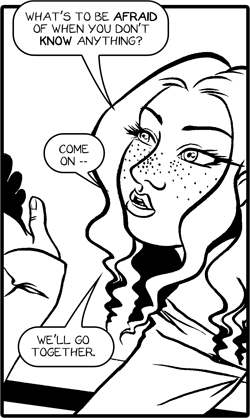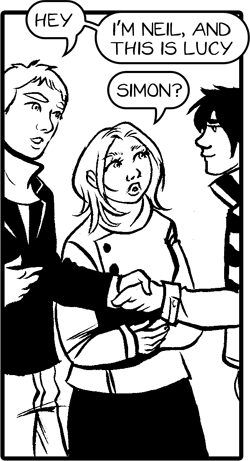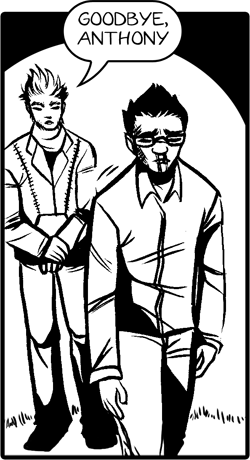
Here we go on to Part 2 of my comics making process - pencilling! So now I move into my office, and set up shop at my drawing desk. Yes, it's a little old and filthy and apparently I work best when surrounded by clutter ... shh! Don't tell anyone!

I've got my coffee and my pig pencil case, so I'm ready. Here are a few of the supplies I use -- paper. Strathmore's smooth Bristol, 11x14, has been my preferred paper for years now.

I use blue pencil, and with a mechanical pencil housing blue lead, I'm able to get a much thinner, sketchier line than I would with a regular pencil. The only problem? I tend to press down really hard when I pencil, so I break the tips off when I draw like nobody's business.

My eraser's pretty standard. It does its job.

So I take my 11x14 sheet of Bristol and tape it down to my drawing table. That way, it doesn't slip out of the way when I'm aggressively sketching and breaking off lead and whatnot. Now here's the part where I do a little math: My paper is 11" wide x 14" long, and my final end product will be printed on paper that's 5.5" wide x 7.75" long - standard page size for a manga-sized book. I've figured out that this gives me about a 4.33" wide x 6.933" long space to fit all my art in, with no risk of bleeding out in to margin space. I'm definitely not the best at properly adjusting my pages in order to take advantage of bleed space in printed pages, but at least I have a rough guess for how much room I'll be allowed to work with for my comic page. So when I compare 11"x14" (paper size) with 4.33"x6.933" (drawing space), I discover that I have to slim down my paper width area a wee bit in order to match the ratio I want to end up with. So my drawing area becomes 8.74" wide x 14" long. So I simply measure 1.14" off of each side, draw a little line, and know that these are my boundaries to draw within.

Then I measure out the page into thirds, since my thumbnail sketch told me that I wanted 3 rows of panels on this page. Again, I do a little math to measure out the page into my panel areas, but you're free to do this as anally or as sketchily as you please.

Now that the page is divided up into spaces for the panels, I mark out the panel lines themselves, leaving a little bit of room between panels for the gutters.

Then, finally, I can begin sketching! I've got my boundaries, I've got my thumbnails, so this should be the easy part, right? Wellll ... it depends on how detailed your thumbnails are, and how skilled you are at things like perspective and environment drawing (and I am not). So this part can take me a little while as I slowly build panel ...

... by panel ...

... being careful to write out all of my dialogue, so I can have room for it when I put it in on the computer in the final stage (stay tuned for that exciting installment!).

Sometimes I'll tape up previous pages as reference (shown at the right is the inked version of this page, which I put up to remember certain details about how I drew the characters the last time).
Until - voila! I'm all done.

The page is now all pencilled and ready to be inked, which is Part 3 of my Comics Process ... stay tuned!
My Comics Process Part 1: Thumbnailing
My Comics Process Part 3: Inking
My Comics Process Part 4: Computerizing
[otw_is sidebar=otw-sidebar-4]
































